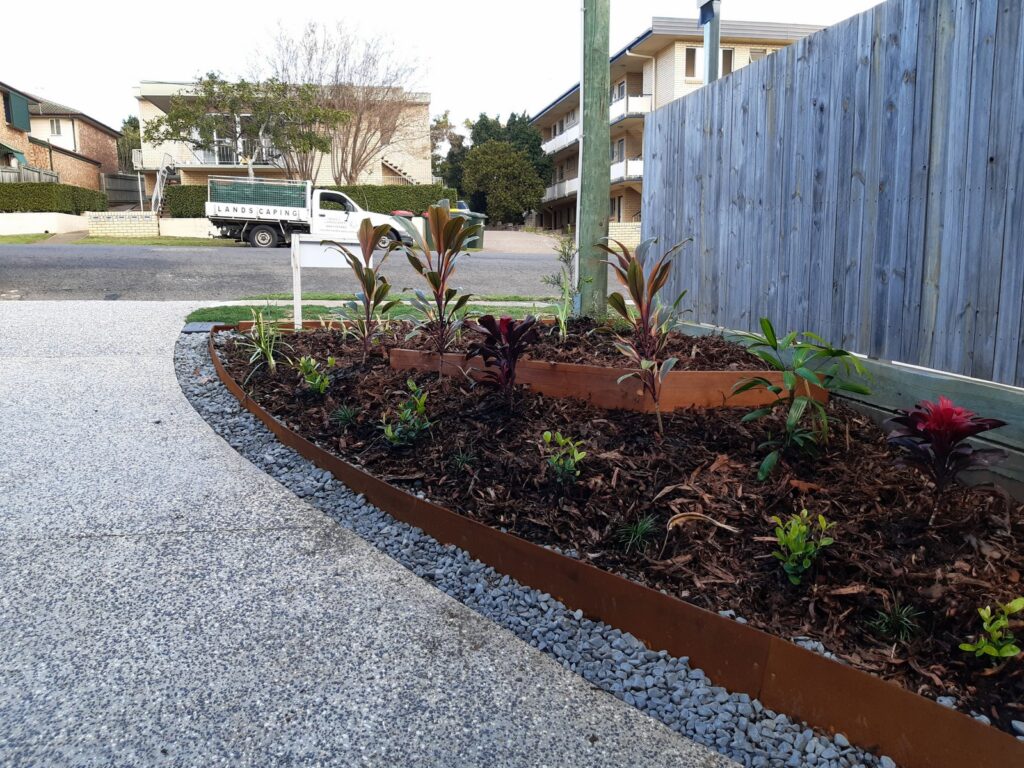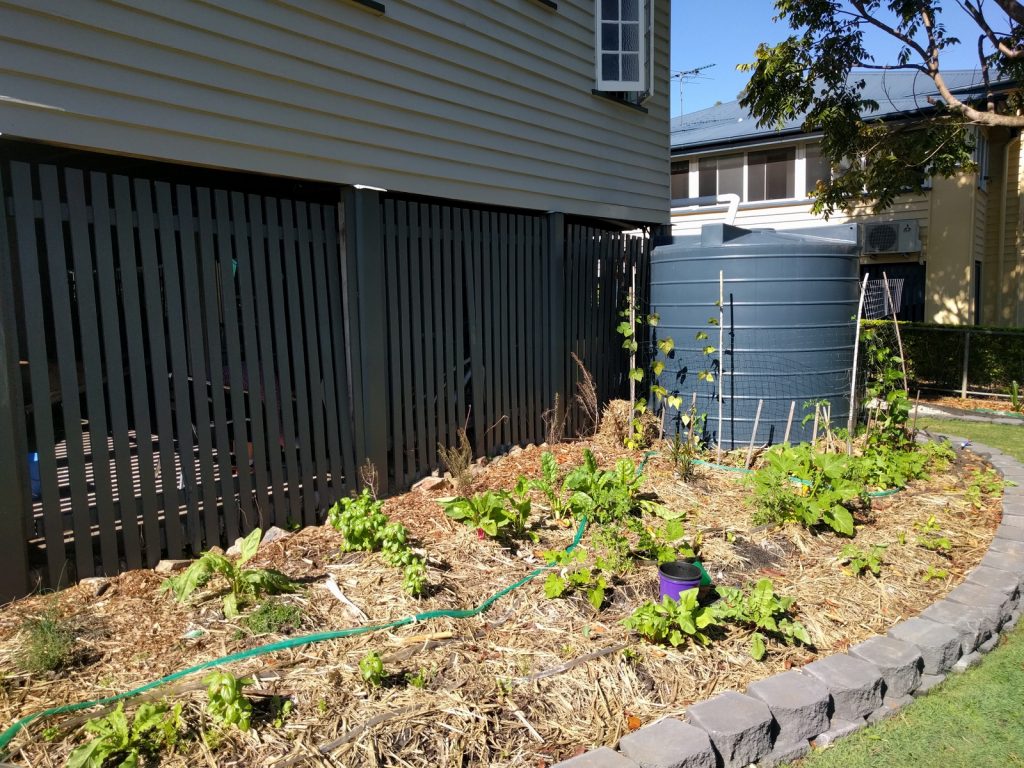
Mulch can save you work, time and money, this guide should help with mulch selection so you have the right type in the right place.
1- Hoop Pine Mulch (around $90 per m3)- coming from plantation grown hoop pine on Brisbane’s outskirts. It is coarse, being in long ribbons from the bark of the pine trees. This coarseness is its main advantage, it can be placed on the steepest banks and stays in place. It also takes a long time to break down, longevity being a great feature of a landscape mulch. Having a large ‘particle size’ (more about this later), it captures and holds moisture, and if spread at the recommended depth of 75mm, suppresses weeds as well.
2- Aged Forest Mulch ($60-70 per m3)- forest mulch is what is left after the tree loppers have visited, however it needs three special qualities to be of good use as a garden mulch. Firstly, it needs to have been aged for at least 6 months. This means it has been stored in a large pile hot enough to allow some decomposition of the material. Inside the piles, heat is generated that kills any tree seeds, and the breakdown process allows the mulch to add beneficial microbial activity to your soil. Using freshly ground mulch can damage your garden. As it breaks down it can heat up plants whilst the decomposition process in the early days can rob the soil of nitrogen.

The second good quality of aged forest mulch is the chip size. If there are too many leaves and dirt in the mulch it will become ‘hydro-static’. The mulch particles join together to form a continuous blanket over the soil that can cause water to wash straight off it. Look for large chips with little in the way of ‘fines’, dirt and decomposed leaves.
The final quality is related to what kinds of trees the mulch is made from. Australian hardwood (Eucalyptus) forest mulch has hardwood chips and so lasts the longest, while being generally free of weed tree seeds. While the clearing of forests is not ideal, at least the by-products can be put to good use. Aged Forest Mulch has been the backbone of many re-vegetation projects.
3- Sugarcane mulch (around $70 per m3 if bought as a round bale)- the Moreton Bay area between Brisbane and the Gold Coast holds an amazing resource, locally produced, affordable and biodegradable mulch that is also a great soil improver. Sugar cane mulch won’t last forever, expect between 3 and 6 months. It will prove ideal in fruit tree establishment, vegetable gardens and as a general quick fix. It can be purchased in square bales ($10-$15) or larger round bales ($70). Disadvantages of cane mulch is it can appear unsightly if blown around by the wind, is slippery when applied to embankments and the aforementioned short life span. However for ease of use, sustainability, cost and soil improvement it is a winner.

4- Coir Mulch ($220 per m3) – coir mulch is a newer product that has good applicability in raised beds and container planting situations. It comes in dried ‘bricks’ and is made from coconut fiber. The bricks expand in water making it ideal to use in townhouses and apartments, being light to carry in before watering into place. A 90ltr block costs around $20 (so around $220 m3), so it isn’t the cheapest mulch but it looks great and lasts. It even works well for orchids, especially Cattleya and Dendrobium types. One note on coir supply is that it is currently encountering some difficulties due to the Covid pandemic in Sri Lanka.

5- Groundcovers – while technically not a traditional ‘mulch’, consider a living mulch of native groundcovers. The groundcovers once established act like mulches, covering the soil by shading it and holding down any lose items like leaves and existing mulch, while trapping moisture. Species to recommend are spreading Myoporum, prostrate grevillea’s such as ‘Bronze Rambler’ and ‘Royal Mantle’, Scaevola albida (fanflower), and Mesembryanthemum (pigface).
Mulches to avoid. Non organic mulches such as stones and gravels are great at suppressing weeds if applied at a good depth (100mm), however they are also great at killing other plants as well due to the heat generated around them in summer. Exceptions for stone mulch use is 100% shaded areas, around very hardy and established trees and potentially in cactus gardens.
Cypress mulches, while smelling good, are often full of ‘fines’ so are not very effective (look for ‘chips’ if you really want to ‘cypress’ weeds). The mulches can be very dusty so wear a mask if spreading. For the money (around $70-$90) consider hoop pine mulch as an alternative. And while they purportedly repel termites, cypress mulch certainly won’t stop termites entering you house.
Cheap ‘tub ground’ ‘forest mulch’ from tree loppers. It may be cheap, it may even be free, but if it is from an exotic pest tree you may be spreading this tree’s seeds around your garden. And remember the fresh mulch may rob your garden of nitrogen and make your plants worse off. Use with caution!

Comments are closed.